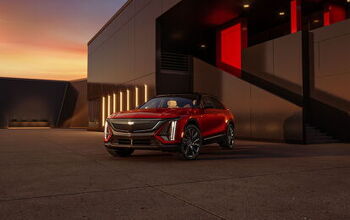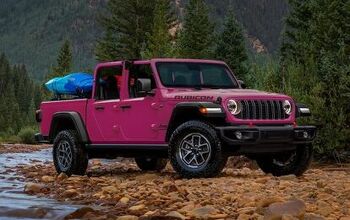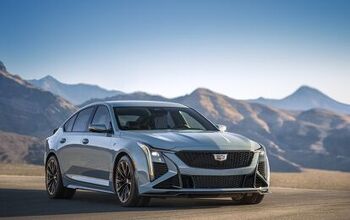Electrification and Expansion: Mitsubishi's 2030 Plan
Mitsubishi Motors North America, Inc. (MMNA) has introduced a comprehensive North American business strategy called "Momentum 2030." This plan, extending to the fiscal year 2030, details the company’s initiatives in electrification, product line expansion, dealership growth, and technological advancement. The strategy was presented to dealer partners in Nashville, Tennessee, generating considerable positive feedback.
Path to Electrification
One of the core aspects of Momentum 2030 is advancing electrification. MMNA plans to offer a variety of powertrains, including hybrids, plug-in hybrids, and battery electric vehicles. This shift aims to meet the growing demand for eco-friendly vehicles and aligns with broader industry trends towards sustainable transportation.
Expanding Product Line-Up
MMNA intends to introduce one new or completely refreshed vehicle each year from fiscal 2026 to fiscal 2030. This expansion will include two all-new vehicles in segments where Mitsubishi currently does not compete. By 2030, the company's U.S. vehicle lineup will nearly double from its current offerings.
Modernized Retail Sales Model
The business plan includes a commitment to modernizing the retail sales model. MMNA aims to incorporate more technology into the sales process to appeal to a younger, more tech-savvy customer base. This approach is expected to enhance the shopping and ownership experience, making it faster and more streamlined.
Network Expansion and Sales Growth
To increase market presence, MMNA will expand its dealer network across the U.S. This move is designed to make Mitsubishi vehicles more accessible to a broader customer base, which is anticipated to drive sales growth through 2030. New dealership designs will reflect modern retail concepts, contributing to a fresh customer experience.
Investment in People and Production
MMNA will boost its investment across North America, focusing on both human resources and production facilities. Some vehicles will be produced locally using Alliance assets, supporting regional economic growth and job creation.
Future Prospects
MMNA's Momentum 2030 plan sets a clear path for the company's growth and evolution in the North American market. By emphasizing electrification, expanding the product lineup, modernizing retail models, and increasing market presence, Mitsubishi Motors aims to enhance its brand and achieve sustained progress.
This article was co-written using AI and was then heavily edited and optimized by our editorial team.
More by TTAC Staff
Latest Car Reviews
Read moreLatest Product Reviews
Read moreRecent Comments
- FreedMike I don't see why you can't have both EVs and conventionally powered cars.
- Zerofoo We leased a new CX-5 for my daughter when she started driving. We put nothing down and bought gap insurance. The theory was if she totaled the car, it was nothing more than a rental. If she kept the car in good shape and the car was reliable, we would, at the end of the lease, have the opportunity to buy a low-mileage 3 year old used car.
- Peter KODAK Moment
- Eliyahu Toyota has looked at the state of the world and decided that hybrids are the best fit for currently achieving environmental and regulatory goals. Their hybrid production is now across many of their models. Honda is following suit. They will both likely also produce some electric vehicles. The best path forward is likely higher fuel taxes, with some tax credit offsets for the lower tax brackets. This would encourage a move toward more fuel efficient vehicles. The US big 3 auto makers are the ones with the most to lose here-they are the late adapters-coasting on trucks.
- 28-Cars-Later Used Teslas are getting very cheap, but buying one can be risky - Ars Technica Teslas are very connected cars, and many of their convenience features are accessed via smartphone apps. But that requires that Tesla's database shows you as the car's owner, and there are plenty of reports online that transferring ownership from Hertz can take time.Unfortunately, this also leaves the car stuck in Chill driving mode (which restricts power, acceleration, and top speed) and places some car settings outside of the new owner's level of access. You also won't be able to use Tesla Superchargers while the car still shows up as belonging to Hertz. Based on forum reports, contacting Tesla directly is the way to resolve this, but it can take several days to process; longer if there's a paperwork mismatch.Once you've transferred ownership to Tesla's satisfaction, it's time to do a software reset on the car to remove the fleet version.So apparently the state maintains title but so does Tesla in a way, and they cripple some features until they feel satisfied in unlocking them to you. How long till they brick it by satellite because, reasons? But yes, rah! rah! BEV! - its not a tool of tyranny at all, honest. Edit: Comment from the Ars forum: Happy MediumArs Tribunus Militum 19y When I got to the section that stated that THE CAR WILL BE FUNCTIONALLY CRIPPLED unless you get Tesla's acceptance of you buying the car, I got incredibly infuriated. How in the hell is this going to work going forwards? Is Tesla literally going to be approving every single resale of its cars from now until the car is totaled? Jeezus, connected is one thing, but having final ownership authority in the hands of the manufacturer and not the seller/purchaser seems horrible. 28's thoughts to Happy Medium.


































Comments
Join the conversation